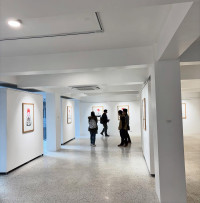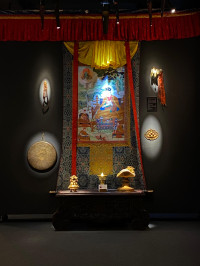Arts
Paying tribute by keeping memories alive
Bibhakar Shakya, the son-in-law of the late Lain Singh Bangdel, has been working on continuing the legacy of Nepal’s foremost artist.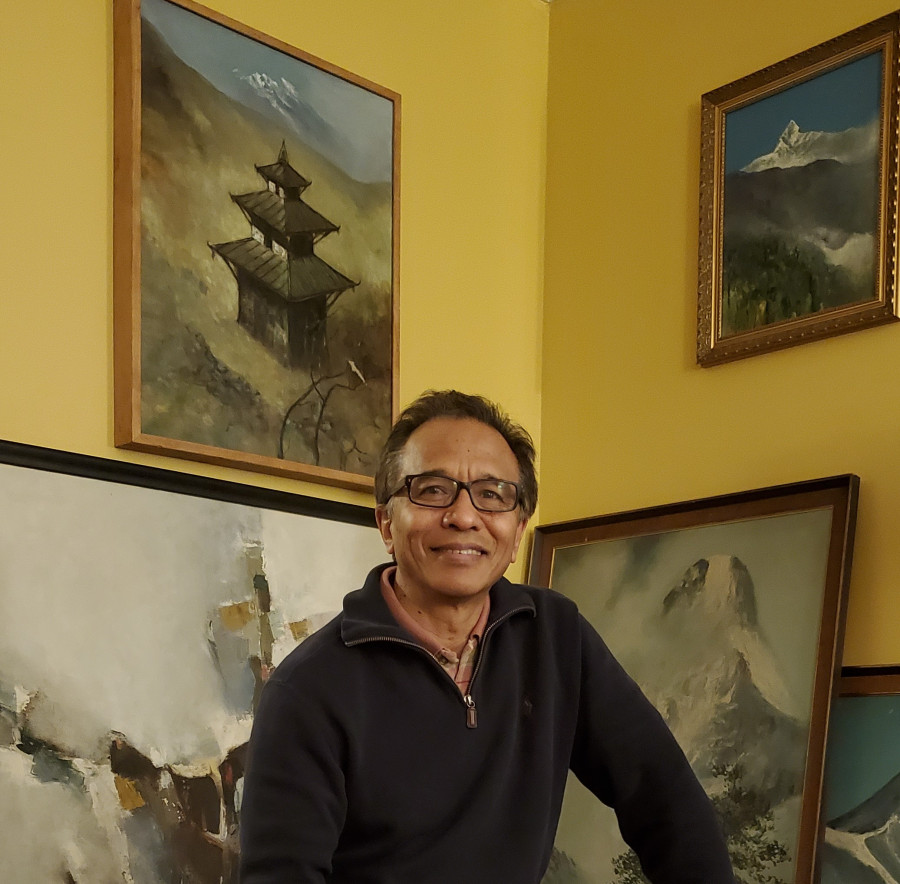
Srizu Bajracharya
When Bibhakar Shakya pulled down the veil to uncover one of his father-in-law’s self-portraits at the Museum of Nepali Art (MONA) a few days back, he had a warm smile on his face.
As Rajan Sakya, the founder of the museum, emotionally ended his speech with the note, “Lain Singh Bangdel now lives here,” at the inauguration event of the painting in the museum in Thamel, Bibhakar was beaming with pride.
Bibhakar Shakya, now 58, has been archiving Nepal’s foremost artist, Lain Singh Bangdel’s works for the last few years—a duty he took over after his late beloved wife Dina Bangdel, Lain Singh Bangdel’s only daughter, passed away four years ago.
For Bibhakar finding a permanent home for one of Lain Singh Bangdel’s works at MoNA was a moment of solace. He was one step closer to his life goal of ensuring the legacy of Bangdel.
“Ensuring his legacy forward is something I must do. I owe it to the contribution he made to Nepali art. There’s this urgent sense that keeps me on my toes now as time is constantly slipping away. After Dina is gone, I take it as my sole responsibility and also a privilege to work on art and literature-related projects to highlight Bangdel’s milestone contributions in Nepali arts, literature, and art history. If I don’t do it, it may not happen at all and I want the future generation to remember him,” said a solemn Bibhakar in his Zoom conversation with the Post.
Lain Singh Bangdel was the artist who introduced modern trends of Western Art in Nepal. He was also an art historian, and in 1989 he published the book ‘Stolen Images of Nepal’, which documented more than 300 missing religious icons from the Kathmandu Valley.
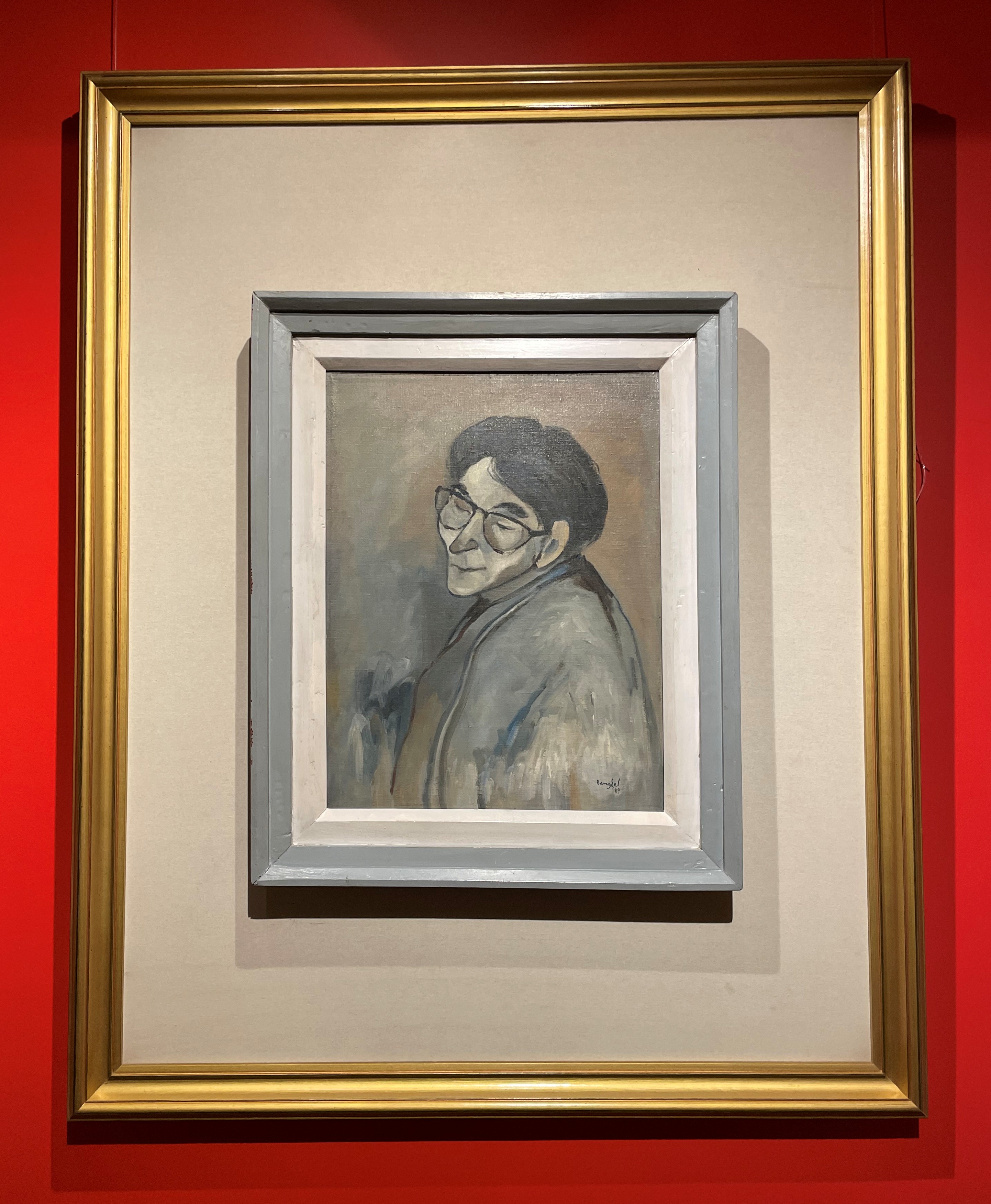
Bibhakar was a school-going student when he first came to know about Bangdel.
“I have always been interested in literature, and it was in my school days that I came to know about him. I read his hallmark novels in Nepali literature like Muluk Bahira, Maitaghar, and Langadako Saathi, all of which he wrote in the 1950s when he lived in Calcutta,” said Bibhakar. “He was a fantastic writer. His words were lyrical, and his stories were socially important. Moreover, his characters gave an outlook of life that people don’t easily think of—like in Langadako Sathi.”
Little did he know at the time that one day he would be the man’s son-in-law. Bibhakar met Dina Bangdel while pursuing his graduate study at The Ohio State University.
“My life changed in many ways after I met Dina. She and Lain Singh Bangdel had a great influence on my life—in the way I look at art, culture, art history, and literature,” said Bibhakar, who is a consultant based in Richmond in Virginia, US. “I was very much interested in art and literature since my high school days, however, the two inspired and touched my life beyond what I ever imagined. I have done professionally well as a PhD economist, but these art and literature projects are what I find exciting and give me the true joy in life.”
Today many in the art community are fond of Bibhakar and interested in the projects that he is leading to preserve and promote the work of the Bangdels—his wife and father-in-law.
“Dina worked with many people in the art scene. She was more tied to the art culture in the country and devoted much of her life to promoting them on the world’s stage. I helped and supported her ventures as much as I could,” said Bibhakar. “And she was the one who wanted to preserve and bring together the works of her father to keep his legacy alive. It was important for her. And it is important for me now, more than ever, to work on her undertaking, for my children and the future generation.”
In the art history of Nepal, Lain Singh Bangdel's contribution can never be forgotten. His works mark an era itself in the modern art scene of the country. However, in these challenging times, there are many who still don’t know him and his works.
Last year, the art community was disheartened when Bangdel’s 1955 watercolour painting of a woman was bought for only 100 pounds. Many artists came forward and said the price was too low for an artist of Bangdel’s calibre and for someone who contributed immensely to the country’s art scene.
“I think the incident showed us how we are yet to introduce and discuss what Bangdel’s works mean in the world. The younger generation and many people from outside the art background don’t really know him. They have not heard of him,” said Bibhakar. “Which makes my work all the more significant. I strongly believe that his artworks should be recognised and respected both at home and abroad.”

Bibhakar remembers his father-in-law as a down-to-earth gentleman and someone who loved socialising and took a genuine interest in talking to people regardless of their social status or professional backgrounds.
“My father and mother-in-law, Manu Kumari Thapa, used to host many dinner gatherings. And in these gatherings, he would commit to intellectual discussions of politics, science, music, and art. His hospitality is one of the things that people who knew him still remember,” said Bibhakar. “Bangdel was a versatile personality—he created diverse genres of paintings like landscape, figurative, portrait, and abstract arts. He also wrote both fiction and non-fiction and also led the Nepal art scene as the Chancellor of the Royal Nepal Academy.”
Bangdel painted whenever he was inspired and was in the mood to let out his mind on paper. And Bibhakar remembers admiring his dedication and passion for art when they lived together for a while in Columbus, Ohio in the early 1990s.
“He enjoyed the process of creating his artworks. And when he would start to work on his painting, he was totally focused. He would go on for hours and would not even take breaks to eat,” shared Bibhakar. “He was also very composed and organised. When we went through his works at home, we pleasantly discovered that he was meticulously organised with his collections. All his letters and photographs were neatly dated and sorted.”
Even then, for Bibhakar, organising the inventory of Bangdel’s work and making the hard decisions of what to do with them, where to place them, and thinking of what Bangdel and his wife would have wanted with those works has been an overwhelming experience. The journey has also meant sifting through memories and learning more things about the family.
“I love working on these projects, setting my deadlines, and discussing Bangdel jee and my wife’s work with people. But yes, there are days when the process drains you emotionally. It isn’t easy when memories come rushing back. But that’s just life, right?” he said.
Bibhakar today has also been working on the translations of Bangdel’s books as part of his endeavour to make the late artist’s works more accessible to people around the world. The translation of Langadako Sathi is slated to release this year, and Bibhakar is also working to turn the book into a movie. He will also start working on the manuscript of other Bangdel’s literary works Maitighar and Muluk Bahira in 2022.
Bibhakar has also simultaneously been working on an art book that includes Lain Singh Bangdel’s paintings. The artbook, he says, will highlight Bangdel as a modern artist and his wife Manu Kumari Thapa, who was the matron of Prasuti Griha and was his pillar of support. He also plans to start a permanent gallery dedicated to Bangdel’s work in the coming years.
“I am also currently planning a Bangdel’s Retrospective Art Exhibition in New York in 2022 with a hope that it will give him the world stage that he deserved so much. His Retrospective Art Exhibition will travel to other states in the US like California, Florida, Ohio, and North Carolina. There’s actually a lot to do and it gets more exciting every day,” he said.
Bangdel’s works are believed to be spread across Europe, Japan, and the US. As Bibhakar perseveres to build a wholesome archive of his artworks, he has been networking with people and organisations across the world who have Bangdel’s artworks.
“One thing I learned from my father-in-law is to do the things you want to do right away. He used to say don’t wait for tomorrow,” said Bibhakar. “And that is what I am doing now. I want to do this now and I want to give back to society Bangdel’s works and his memories.”
It is apparent that for Bibhakar, this is more than an obligation and instead is his promise to keep. He also thinks it’s a privilege for him to be a small part of such a monumental legacy.
These days, when people invite him to talk about Lain Singh Bangdel and his works, Bibhakar feels proud and more than blessed to witness the lives Bangdel has touched.
At MoNA, he was elated with the discussion of Bangdel’s 1989 self-portrait that portrayed his bliss and content with life. “The year 1989 was when Bangdel retired from his occupational work and perhaps was when he decided to live for himself,” said Rajan Sakya, while addressing a small gathering of artists.
And throughout the address, Bibhakar’s eyes glinted with joy and appreciation.
“When you see people discussing his works and remembering his contributions, it makes all the more sense why I need to work on keeping his legacy alive,” said Bibhakar.




 16.35°C Kathmandu
16.35°C Kathmandu
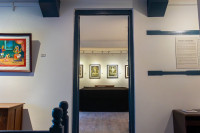
%20(1).jpg&w=200&height=120)

